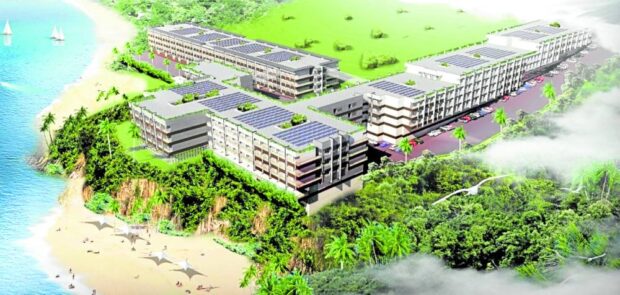
Sia sees immense potential in Philippine tourism, citing the country’s location, English-speaking population, and natural tourist sites. (FILE PHOTO)
Following the COVID-19 pandemic, the Philippine tourism industry is undergoing a significant transformation.
Recovery strategies like the E-arrival pass, streamlining information from various government agencies, and establishing tourist rest areas aim to enhance the travel experience. Domestic tourism is also boosting, with public holidays moving to Mondays to encourage travel.
These developments provide a solid foundation for growth and diversification in various tourism sectors, including arts, film, dive and marine sports, education, health and cruise tourism, food and gastronomy, culture and heritage, meetings, incentives, conferences and exhibitions (MICE), as well as halal tourism.
Hotel 101 was positioned to cater to value-conscious guests. (FILE PHOTO)
Insights from Hotel 101
In an interview, Edgar “Injap” J. Sia revealed that Hotel 101-Manila maintained an occupancy rate of over 90 percent during the pandemic while serving as housing for business process outsourcing (BPO) and quarantine hotel.
The hotel’s unique features, like kitchenettes in studio units, have distinguished it from traditional hotel alternatives. Sia anticipated longer stays by postpandemic travelers and has positioned Hotel 101 to cater to value-conscious guests. The hotel’s standardized single SKU concept across its global ecosystem mirrors the budget airline model’s efficiency.
Hotel 101 is well positioned to tap opportunities amid the continuing recovery of tourism. (FILE PHOTO)
The Philippine Tourism Landscape
Sia sees immense potential in Philippine tourism, citing the country’s location, English-speaking population, and natural tourist sites.
The geographical location makes it an accessible gateway to Asia, offering a blend of cultural and natural attractions. Its archipelagic nature boasts numerous pristine beaches, diverse marine life, and lush landscapes. Furthermore, the widespread use of English facilitates communication, enhancing the overall experience for international visitors.
He believes achieving 30 million annual tourist arrivals is feasible with improved infrastructure. Despite the volatility of 2024, Sia remains optimistic, viewing economic recessions as opportunities for entrepreneurial growth and market consolidation.
“These temporary periods of dislocation and chaos have created rare windows of opportunity for their businesses to strengthen their market grip and enable many of them to become what we know today as the world’s most incredible businesses,” Sia assures.
Current State and Future Projections
The tourism sector, heavily impacted by the pandemic, is now on an upward trajectory. Despite external challenges, the government aims to double the 2022 figure of 2.46 million visitors, targeting around 4.8 million arrivals in 2023.
This growth is partly attributed to the successful “It’s More Fun in the Philippines” campaign promoting domestic travel. Additionally, the government is refocusing its strategy to attract Middle Eastern tourists, expanding halal tourism accreditation across the Philippines.
The author, Ian Fulgar, at www.ianfulgar.com, is a leading architect with an impressive portfolio of local and international clients. His team elevates hotels and resorts, condominiums, residences, and commercial and mixed-use township development projects. His innovative, cutting-edge design and business solutions have garnered industry recognition, making him the go-to expert for clients seeking to transform their real estate ventures